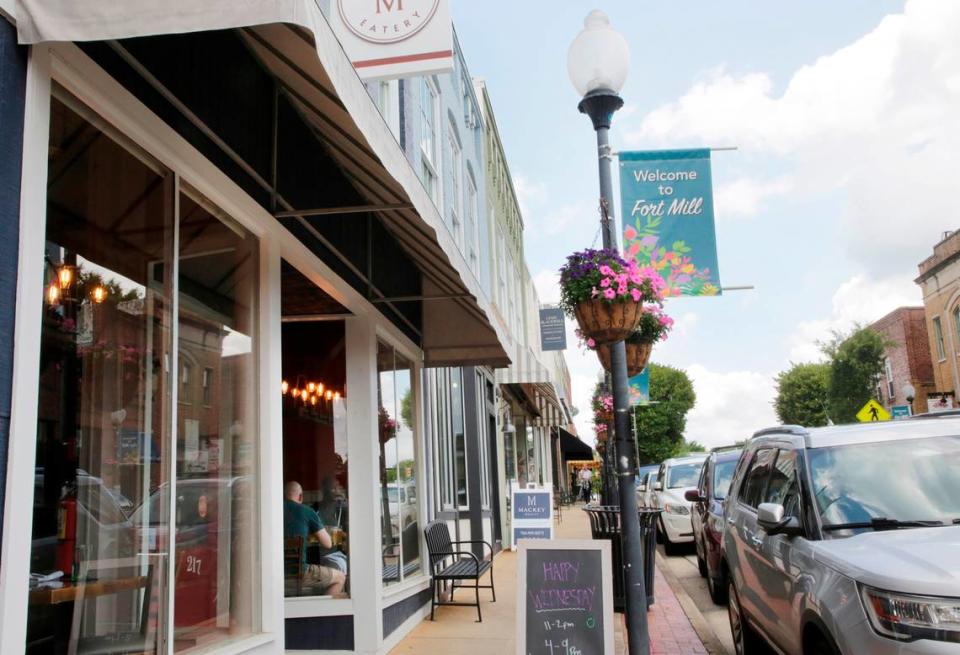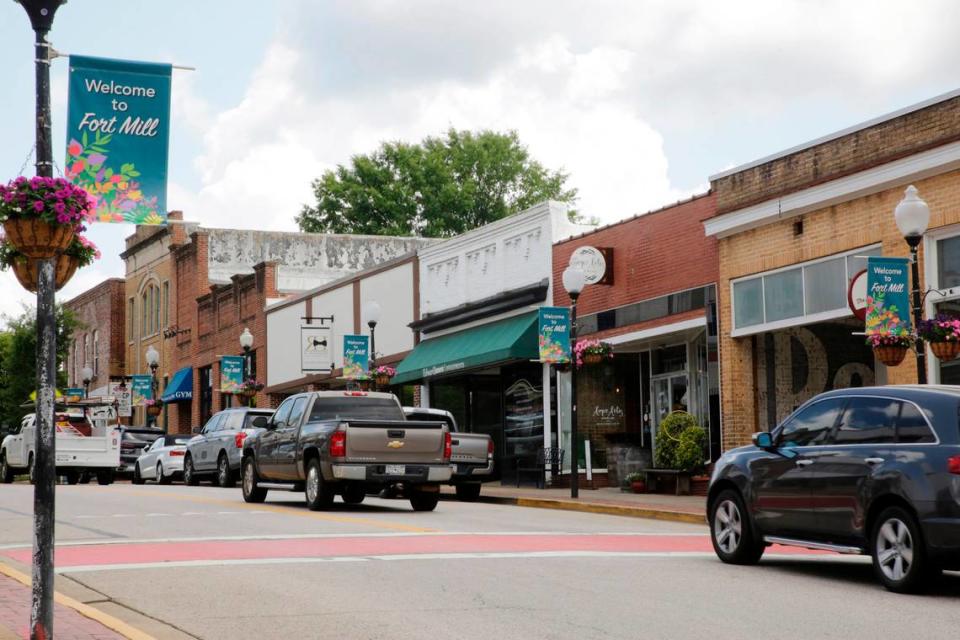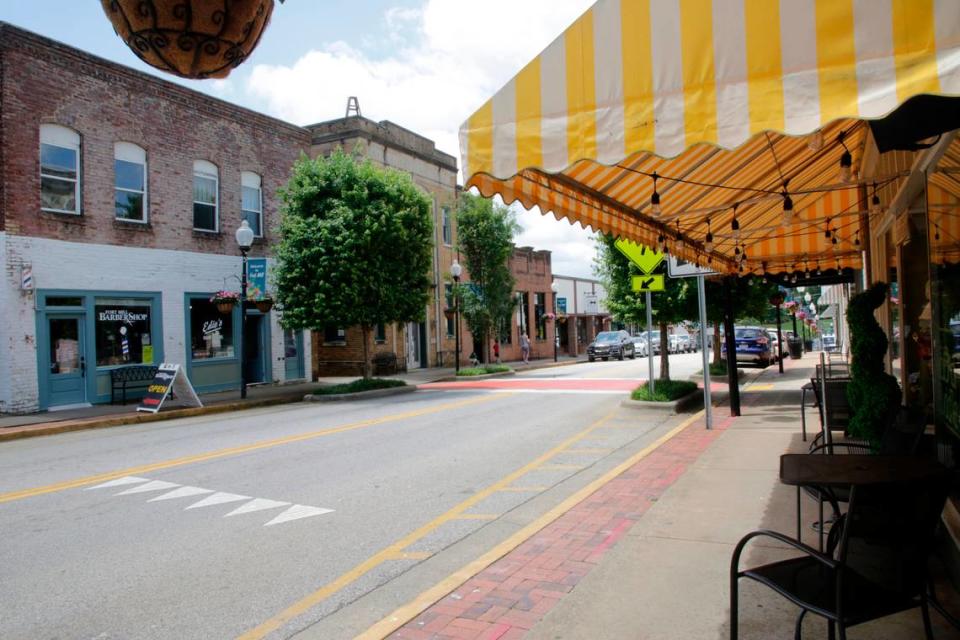Fort Mill growth rate is bigger than all but a handful of big US cities and towns
Fort Mill is one of the fastest growing towns in the country. Again. But it’s hardly alone in the region.
The U.S. Census Bureau released new population and housing unit estimates Thursday morning. Those numbers show growth from Charlotte to Van Wyck and in most area cities and towns in between.
The new figures estimate populations as of mid-2023 and compare them to the same point in prior years.
While Charlotte grew by the third most people of any city in the country in a year, Fort Mill ranked No. 13 in growth rate for all municipalities with 20,000 or more people. Fort Mill ranked even higher in growth rate since 2020.
Here are five takeaways on how the Rock Hill region continues to change:
Want to see 150 years of York County population change in less than a minute?
Fort Mill leads growth surge
Fort Mill had 24,514 people in 2020. The latest estimate of 33,626 residents is an increase of 37.2%, the seventh highest in the nation in that span for places with 20,000 or more people.
The five cities and one town that rank higher are in Texas, Utah and California. The next highest communities in the Charlotte metro area are Waxhaw at No. 90 (12.3%) and Kannapolis at No. 97 (11.7%), both in North Carolina.
A year after being top five nationally for its size in one-year growth rate, Fort Mill was No. 13 nationally for communities with 20,000 or more people. From mid-2022 to 2023 the town grew by 8.8%.
The amount of new people in Fort Mill since 2020 is roughly the same amount of residents York or Lancaster has, plus another 800 people. The 2,726 more residents in a single year would rank No. 95 in the state out of 271 cities and towns, if they were a separate town.
That one-year number is more than double the growth of Rock Hill since 2020, despite that city being more than twice the size of Fort Mill.

York, Van Wyck among high-growth areas
For communities of all sizes, Fort Mill ranked No. 5 statewide in single-year growth rate. Atlantic Beach, a town of 355 people, topped the list at 24.6% growth. Other Rock Hill region communities weren’t far behind Fort Mill.
At 5.8% growth, York ranked No. 8 in South Carolina. That city has an estimated 9,154 residents.
The area’s newest town, incorporated in 2017, ranked No. 17 with 3.4% annual growth in Van Wyck. The Lancaster County municipality has 990 residents.
Next among area communities were No. 22 Kershaw (3.3% growth), No. 32 Heath Springs (3%), No. 37 Tega Cay (2.7%), No. 38 Lancaster (2.7%), No. 106 Fort Lawn (0.9%), No. 124 Hickory Grove (0.7%), No. 131 Chester (0.6%), No. 135 Great Falls (0.5%), No. 138 Rock Hill (0.4%) and No. 157 Sharon (0.2%).

Lowrys, Richburg and McConnells held steady, while Clover dipped 0.1% to 7,391 residents. Smyrna dropped 1.7% to 57 residents.
Since 2020, the highest growth rates in the area are No. 3 Fort Mill (37.2%), No. 12 Van Wyck (14.2%), No. 15 Kershaw (12.9%), No. 19 Heath Springs (12%), No. 21 Clover (10.7%), No. 24 Tega Cay (9.5%), No. 38 York (7.7%), No. 43 Lancaster (6.8%), No. 94 Hickory Grove (2.9%), No. 106 McConnells (2.1%), No. 111 Sharon (1.7%), No. 112 Rock Hill (1.7%), No. 131 Fort Lawn (0.9%).
Smyrna didn’t change in population since 2020. Chester dropped 1% to 5,227 people. Lowrys was down 1.1%, Great Falls 1.2% and Richburg 2.1% in three years.
Rock Hill ranks among largest SC cities
Rock Hill remains the fifth largest city in South Carolina. Charleston, Columbia, North Charleston and Mount Pleasant each have at least 20,000 more people. Charleston is more than double Rock Hill’s size.
The 75,654 people in Rock Hill is a slight increase of 0.4% in a year and 1.7% since 2020. Both those figures are lowest among the top eight most populated cities and towns in the state.
North Charleston, for instance, has grown more than three times faster since 2020 than Rock Hill has.
Still, south of Charlotte there isn’t another place as big as Rock Hill for miles. Fort Mill is next in the region at No. 21 for total population. Two Fort Mills and a Clover would fit into Rock Hill, with a little population left to spare.

Most people don’t call cities home here
Most of the almost 439,000 people in the Rock Hill region don’t live in cities or towns.
Due to decades of high growth in unincorporated Indian Land, Lancaster County houses 88.1% of its population outside municipal limits. The population of unincorporated Lancaster County is almost the same — about 700 fewer people — as its entire population from the 2020 Census.
Chester County has 73.4% of its population in unincorporated areas. In York County it’s 52.7%, driven by population hubs like Lake Wylie and the subdivisions between Fort Mill and Tega Cay.
Rock Hill has the highest percentage of its county population, at 25.4% of all people in York County. Chester has 16.2% of the Chester County total, followed by Fort Mill with 11.3% and Lancaster with 8.4% of their respective counties.
County housing grows
York County is No. 7 out of 46 counties statewide with almost 124,000 housing units. Lancaster County is No. 16 with more than 45,000 units and Chester County is No. 31 with almost 15,000 units. Those ranks haven’t changed much since the 2010 census, but the number of units has.
The Census Bureau defines a housing unit as a house, apartment or even a room meant as separate living quarters.
As of last summer, the Rock Hill region had 13,375 more housing units than it did in 2020. York County added the most at 8,953 units, followed by Lancaster County at 4,130 units and Chester County at 292 units.
York County ranked No. 6 and Lancaster County No. 13 for total housing growth in that span. By percentage, Lancaster County was No. 4 with a 10.1% increase in those three years. York County was No. 8 at 7.8%.
Lancaster County is tied for No. 70 among all counties in the nation for growth rate since 2020. The top county nationwide also is in South Carolina, with a 21.3% rate in Jasper County.

